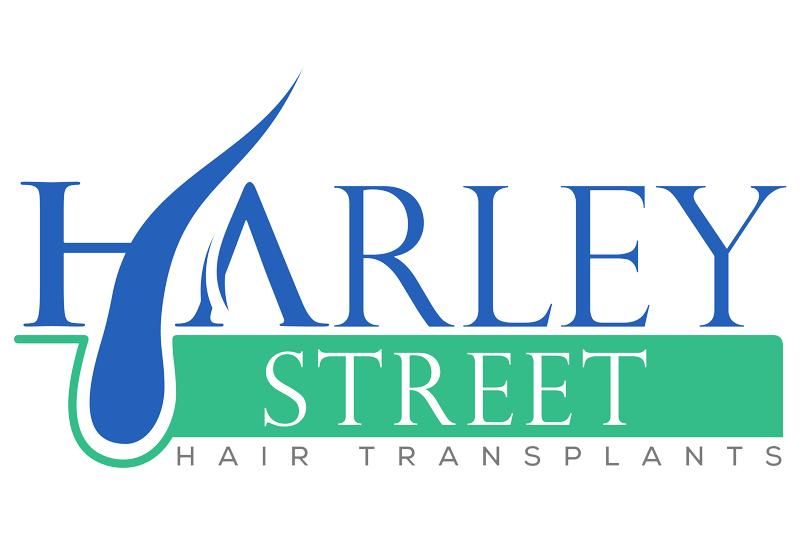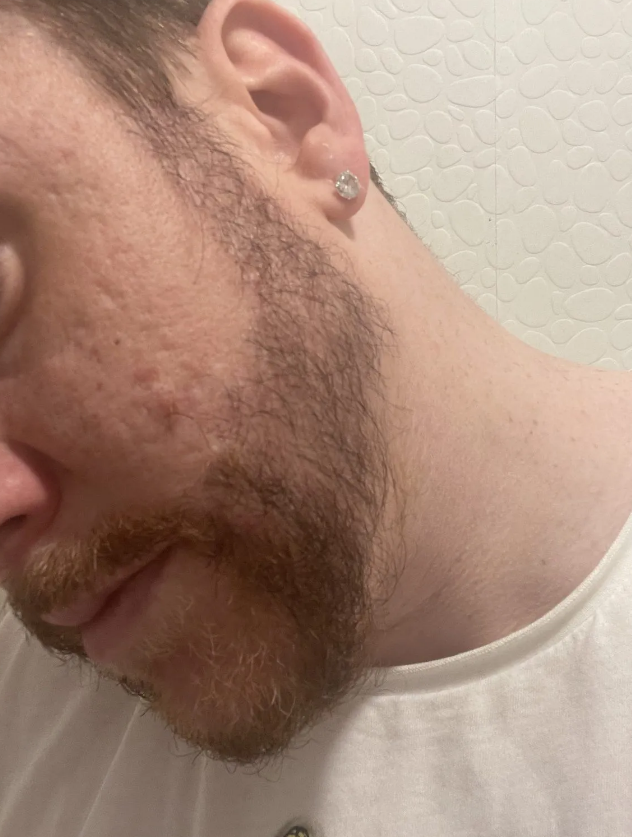Beard Hair Transplants in Edinburgh
If your facial hair growth is sparse or patchy, beard hair transplants can provide the solution you've been looking for. At our Edinburgh hair transplants clinic, our professional team offers expert beard hair transplant services to help you achieve the beard of your dreams with natural and long-lasting results.
Beard hair transplants have gained significant popularity in recent years as more men seek to enhance their facial hair growth. For those in Edinburgh looking to achieve a fuller, thicker beard, Harley Street offer a reliable and effective solution.
What is a beard hair transplant?
Beard hair transplants, also known as facial hair restoration, involve the transplantation of hair follicles from the donor area (usually the back of the scalp) to the beard area. The procedure is typically performed under local anesthesia and can take several hours, depending on the extent of the transplant.
The surgeon carefully extracts individual hair follicles using advanced techniques, such as follicular unit extraction (FUE) or follicular unit transplantation (FUT). FUE involves harvesting individual hair follicles, while FUT involves removing a strip of tissue containing hair follicles. Both methods have their advantages, and the choice depends on the patient's specific needs and the surgeon's expertise.
Once the hair follicles are harvested, the surgeon meticulously implants them into the beard area, following the natural growth pattern to create a realistic and aesthetically pleasing result. The transplanted hair follicles typically start to grow within a few months, and the final results can be seen within 9 to 12 months.
What causes beard hair loss?
Beard hair loss, also known as facial hair thinning or patchiness, can occur due to various factors. Understanding the underlying causes is crucial for determining the appropriate treatment or management approach. Here are some common factors that can contribute to beard hair loss:
Genetics: Just like scalp hair loss, genetics can play a role in beard hair loss. Some individuals may have a genetic predisposition to thin or patchy facial hair, leading to inadequate beard growth.
- Hormonal Imbalances: Hormonal imbalances, such as low testosterone levels or an imbalance between testosterone and dihydrotestosterone (DHT), can affect beard hair growth. DHT is a hormone derived from testosterone that can cause hair follicles to shrink and produce weaker, thinner hairs.
- Aging: As men age, the production of testosterone may decrease, potentially affecting beard hair growth. Additionally, the aging process can lead to a reduction in blood circulation to the hair follicles, which can impact their health and vitality.
- Stress and Illness: Stress, both physical and emotional, can disrupt the normal hair growth cycle and contribute to beard hair loss. Similarly, certain illnesses or medical conditions, such as thyroid disorders or autoimmune diseases, can also impact beard hair growth.
- Skin Conditions: Skin conditions like alopecia areata, a condition where the immune system attacks hair follicles, can result in patchy beard hair loss. Other skin conditions, such as eczema or fungal infections, can also affect beard hair health and growth.
- Poor Nutrition: Inadequate nutrient intake, particularly essential vitamins and minerals, can impact overall hair health, including beard hair. A diet lacking in protein, vitamins A, C, E, and B vitamins, as well as minerals like zinc and iron, may contribute to beard hair loss or poor growth.
- Excessive Grooming or Styling: Over-grooming, using harsh chemicals, or frequent styling of the beard can cause damage to the hair follicles, leading to hair loss or breakage.
It's important to consult with a healthcare professional or a dermatologist to determine the underlying cause of beard hair loss in your specific case. They can provide an accurate diagnosis and recommend appropriate treatment options or lifestyle modifications to promote beard hair growth and overall hair health.
Planning for a Hair Transplant?
Planning for a hair transplant is an important step towards achieving your desired look. Before undergoing the procedure, it is important to consult with a qualified hair transplant surgeon to discuss your expectations, assess your suitability for the procedure, and create a personalised treatment plan. Our surgeons will evaluate your hair loss pattern, hair density, and donor area to determine the number of hair grafts needed and the best technique for your individual needs. Additionally, we will provide you with pre-operative instructions, such as avoiding blood-thinning medication and smoking, and post-operative care instructions to ensure a smooth recovery. It is important to follow these instructions carefully to optimise the success of the hair transplant procedure. With careful planning and the guidance of our skilled hair transplant surgeons, you can achieve natural-looking and long-lasting results from your hair transplant procedure.
Book Your
Free Consultation Today
Contact Us
Our range of
Hair Loss Treatments
Patient Care Is Our Leading Priority

Follicular Unit Extraction (FUE)
FUE is a minimally invasive procedure that does not require a large incision or stitches, resulting in minimal scarring and a faster recovery time.

Follicular Unit Transplantation (FUT)
FUT can be an effective hair restoration option for patients with larger areas of baldness or those who require a higher number of grafts.

Non Surgical Hair Loss Treatment
Non-surgical hair restoration treatment makes use of the patient's own blood to promote hair growth.

Eyebrow Hair Transplants
Eyebrow hair transplants are a specialised hair restoration procedure that involves transplanting hair follicles from the scalp to the eyebrows.

Beard Hair Transplants
Beard hair transplants are a specialized hair restoration procedure that involves transplanting hair follicles from the scalp or other areas of the body to the beard area.

Female Hair Transplants
Female hair transplants are a specialized hair restoration procedure that involves transplanting hair follicles to the areas of thinning or balding hair in women.
BEARD HAIR TRANSPLANTS IN EDINBURGH
What are the advantages of a beard hair transplant?
Beard hair loss presents a real and troublesome problem for many men throughout the UK. Fortunately, with latest advancements in hair transplant technology, poor beard growth can be treated permanently! Beard hair transplants provide individuals with a chance to achieve the beard style they desire, whether it's a fuller beard, a more defined jawline, or filling in patchy areas. The transplanted hair blends seamlessly with existing facial hair, resulting in a natural-looking beard. For many men, a beard is a symbol of masculinity and self-confidence. By improving the density and fullness of their beard, individuals often experience an increase in self-esteem and a positive impact on their overall well-being. Beard hair transplants offer a long-lasting solution. The transplanted hair follicles are typically resistant to hair loss, ensuring that the beard remains intact for years to come.
Things to consider before getting a beard hair transplant
At our Edinburgh hair transplant clinic, we know that making a decision to get a beard hair transplant is big one. Before choosing a clinic for your beard hair transplant it is important to consider the following factors:
Choose an Experienced Surgeon - When considering a beard hair transplant, it is crucial to select a reputable and experienced surgeon who specialises in hair restoration procedures. Researching the surgeon's qualifications, reviewing before-and-after photos, and reading patient testimonials can help make an informed decision.
Have Realistic Expectations - While beard hair transplants can produce remarkable results, it's important to have realistic expectations. Each individual's hair growth pattern is unique, and the surgeon can assess the feasibility of achieving the desired outcome during the consultation.
Recovery and Aftercare - Following the procedure, patients may experience mild swelling, redness, and scabbing in the transplant area. It is essential to follow the post-operative instructions provided by the surgeon, including proper cleaning and avoiding activities that may damage the transplanted hair.
What results to expect from a beard hair transplant?
When undergoing a beard hair transplant, it's important to have realistic expectations regarding the results. A beard hair transplant can help increase the density of your facial hair, particularly in areas that are thin or patchy. The transplanted hair follicles are carefully placed to create a more even and full beard. Skilled surgeons take great care to ensure that the transplanted hair follicles match the natural growth pattern of your existing facial hair. This attention to detail helps create a seamless integration between the transplanted and original hair, resulting in a natural-looking beard.
After a beard hair transplant, it's important to understand that the transplanted hair follicles will follow their natural growth cycle. Initially, the transplanted hairs may shed within a few weeks of the procedure. However, this shedding is temporary, and new hair growth will typically begin within a few months. Over time, the transplanted hairs will continue to grow, resulting in a fuller and thicker beard. The final results of a beard hair transplant can take up to 9 to 12 months to fully manifest and this timeline accounts for the hair growth cycle and the gradual development of the transplanted hairs. It's crucial to be patient and allow sufficient time for the transplanted hairs to reach their full growth potential. It is also important to follow the prescribed aftercare routine to achieve the desired results.
Whilst a beard hair transplant is successful for most patients, it is important to remember that every individual's hair growth pattern is unique. Factors such as hair texture, colour, and natural growth rate can vary from person to person. Additionally, the success of the beard hair transplant may depend on the quality and quantity of available donor hair. During your initial consultation, your surgeon will assess these factors and provide a realistic expectation of the potential results.
Before getting a beard hair transplant, it is essential to consult with a skilled and experienced hair transplant specialist who can evaluate your specific case and provide personalised insights into what you can expect from your beard hair transplant. They will take into account your individual goals, hair characteristics, and the feasibility of achieving your desired beard appearance.
What causes beard hair loss?
As a leading hair transplant clinic in Edinburgh, we are dedicated to providing top-quality DHI hair transplants with a focus on personalized care and attention to detail. Here are some reasons why you should choose us for your DHI hair transplant:
- Experienced and skilled team: Our team of surgeons and technicians are highly trained and experienced in DHI hair transplant techniques. They have performed numerous successful procedures, and are committed to providing excellent results.
- State-of-the-art facilities: We use the latest equipment and technology in our clinic to ensure that our patients receive the best possible care. Our facilities are designed to provide a comfortable and safe environment for our patients.
- Personalised approach: We understand that every patient is unique, and we tailor our approach to meet your individual needs. Our team takes the time to understand your goals and concerns, and develops a treatment plan that is customized for you.
- Transparent pricing: We believe in transparency when it comes to pricing, and we provide clear and upfront costs for our services. We also offer financing options to make our services more accessible to everyone.
- Comprehensive aftercare: We provide comprehensive aftercare services to ensure that you have a smooth and comfortable recovery. Our team is available to answer any questions or concerns you may have, and we provide detailed instructions on how to care for your newly transplanted hair.
At Harley Street hair transplant Edinburgh, we are committed to providing exceptional DHI hair transplant services that meet the highest standards of quality and care, contact us today for a free consultation.
How many grafts is a beard hair transplant?
The number of grafts required for a beard hair transplant can vary depending on the individual's desired beard density, existing hair growth, and the specific goals of the procedure.
On average, a beard hair transplant may involve anywhere from 500 to 3,000 grafts. However, it's important to note that this is a general range, and the actual number of grafts needed for your specific case will be determined during a consultation with our qualified hair transplant specialist.
Our surgeon will assess factors such as your facial anatomy, beard pattern, and hair characteristics to determine the optimal number of grafts required to achieve your desired results. They will also discuss the available options and work with you to create a personalised treatment plan that aligns with your goals.
Keep in mind that the number of grafts can also impact the cost of the procedure, as the pricing is often based on a per-graft basis. It is advisable to consult with us to get an honest and accurate assessment of the grafts required and the associated cost for your specific beard hair transplant.
Bespoke beard hair transplants
The right beard shape and density can help create better facial proportions. By filling in patchy areas or adding volume to sparse facial hair, a beard hair transplant can restore balance to your face and improve the overall harmony between your features. At Harley Street Hair Transplant Edinburgh, we treat every patient on a cases by case basis. One of the most important factors in achieving a natural looking beard transplant is to utilise facial framing. Facial framing is the process of strategically designing and shaping the transplanted hair to enhance the overall appearance of your face and create a harmonious balance between your beard and other facial features. Facial framing is crucial to the success of your beard hair transplant to achieve facial symmetry. In a successful beard transplant, the placement and distribution of transplanted hair follicles are carefully planned to ensure that the beard enhances the natural contours of your face. This can help create a more balanced and aesthetically pleasing appearance.
A well-defined jawline can greatly enhance your facial features. During your beard hair transplant, our surgeon will strategically transplant hair along the jawline to create a sharper, more masculine look. This framing effect can help accentuate your jawline and contribute to an overall more attractive appearance. In some cases, facial framing through a beard hair transplant can help soften certain facial features. For individuals with angular or prominent facial structures, a well-designed beard can create a more gentle and youthful look, adding a touch of softness and warmth to the face.
Whilst facial framing is important, it is not a one-size-fits-all approach. It is tailored to your unique facial structure, taking into account factors such as the shape of your face, the position of your cheekbones, and the height of your hairline. By customizing the beard transplant to your individual features, our techniques can help to create a more natural look and complement your specific facial characteristics.
When undergoing a beard hair transplant, it is crucial to choose a skilled and experienced surgeon who understands the importance of facial framing. They will take into consideration your desired beard style, facial features, and overall aesthetic goals to design a transplant plan that maximizes the framing effect and achieves the desired outcome. By incorporating facial framing techniques during the beard hair transplant procedure, you can expect to achieve a beard that not only fills in patchy areas or adds density but also enhances your overall facial appearance, bringing out your best features and creating a well-balanced and attractive look.
To find out more, contact one of our hair loss surgeons today!
Popular Questions
Got a question for our Edinburgh hair transplant team? We’re here to help.




